
Become a member
Join today and help protect nature, beauty and history – for everyone, for ever. Enjoy access to more than 500 places with National Trust membership.
A living working estate, guided by the seasons with an impressive mansion, parkland, gardens and rare breed farm.
Arrington, Royston, Cambridgeshire, SG8 0BW

| Asset | Opening time |
|---|---|
| Hall | Tours Only |
| Garden | 09:30 - 17:00 |
| Parkland | 09:30 - 18:00 |
| Home Farm & Play Area | Closed |
| Farm Café | Closed |
| The Old Rectory | 10:00 - 16:00 |
| Stable Café | 10:30 - 16:00 |
| Shop | 10:30 - 15:30 |
| Car Park | 09:00 - 18:00 |
| Visitor Welcome | 09:30 - 16:00 |
Head to The Stables to discover the second-hand bookshop, stocked full of pre-loved books
Dogs on leads are welcome in the Parkland, Stables area and outdoor terrace at the Old Rectory restaurants. Only assistance dogs are permitted into the Hall, Gardens and Home Farm
12 7.4 kW electric vehicle charging points are available in the main car park. Chargers can be accessed using mobile app, RFID card, or contactless payment device. Visit our EV charging partner, RAW Charging's website (www.rawcharging.com/drivers) to download the app before your visit.
Toilets are available at Hardwicke Gate, the Hall, Home Farm, the Old Rectory Restaurant and The Stables
Blue Badge parking and accessible toilets. Mobility scooters and wheelchairs to hire, buggy service available. Accessible routes available.
A hard standing route through the car park to Visitor Welcome Centre, Stables, Café, Gardens, and Farm is available. There is a partial hard-standing path to the Hall, with gravel immediately in front of the Hall and in some areas of the garden and farm. There is a multi-use 5.5km trail around the wider estate.
Accessible toilet facilities are available at the Visitor Welcome Centre next to the car park, the Hall, Home Farm, Rectory Café and The Stables. We do not, currently have a ‘Changing Places’, however these are available at several of other National Trust properties. The nearest ‘Changing Places’ facility is at the Imperial War Museum at Duxford.
Accessible toilet - more informationBlue badge and family parking is available in the main car park, 94 yards from the Visitor Welcome Centre.
Induction loops are available at all till points. A portable induction loop is available from the Visitor Welcome Centre.
The Stables are cobbled and uneven on the way to the shop.
Five powered mobility scooters are available to borrow from the Visitor Welcome Centre, next to the car park. Please call: 01223206000 or email wimpolehall@nationaltrust.org.uk to reserve one in advance of your visit.
Our stair climber for the Hall is available to be pre-booked before your visit. To book, please call: 01223206000 or email wimpolehall@nationaltrust.org.uk. Please read the full terms of use via the link below.
Stairclimber - more informationThe café main entrance is stepped, there are two side ramped entrances which are signed from the main path to support access. There is gravel in front of the Hall and in areas of the Farm to be aware of. The hall has a flight of 12 stone steps to the main entrance, with stone balustrade and a landing halfway up the steps.
An 8-seater mobility buggy, driven by volunteers, is available daily between 10am - 4pm to transfer visitors between the Visitor Centre, the Stables, the Hall, the gardens and the farm. Please ask staff on arrival for this service, or staff at the Gift shop, Hall or cafés to radio for the buggy from other locations.
Three manual wheelchairs are available to borrow from the Visitor Welcome Centre in addition to two mountain trikes. These off-road wheelchairs require a person to push and are suitable for exploring the parkland and wider estate.
Discover the exciting events and activities at taking place at Wimpole Estate, including fun filled seasonal trails, incredible live performances, and informative talks & tours.
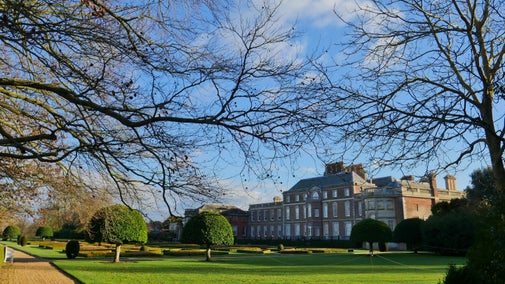
Be dazzled by the new Illuminations trail, and enjoy choirs singing, decorations galore, and lots of festive food and drink.
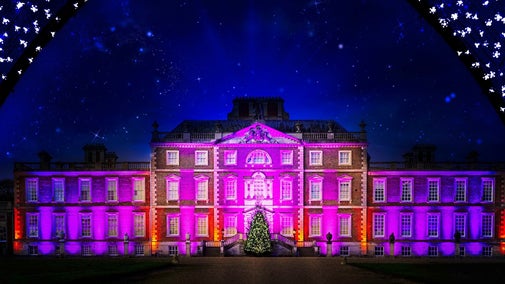
From events and activities to getting close to animals, here's what you need to know about a family day out at Wimpole.

We want to ensure that Wimpole Estate is accessible to all visitors. While this historic estate presents some unique access challenges, we’re committed to making it as inclusive as possible so everyone can enjoy Wimpole’s history and natural beauty. Here, you’ll find essential information about access across the estate to help you make the most of your visit.
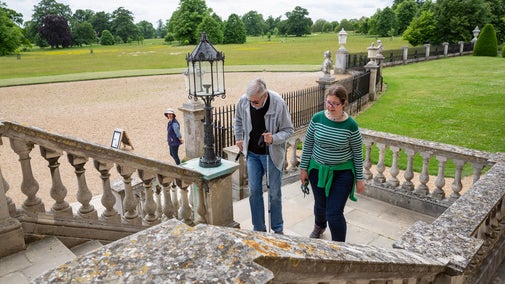
Wimpole Estate is a two pawprint rated place. Find out where you can and can't go with your pooch and the facilities available for dog owners on the estate.
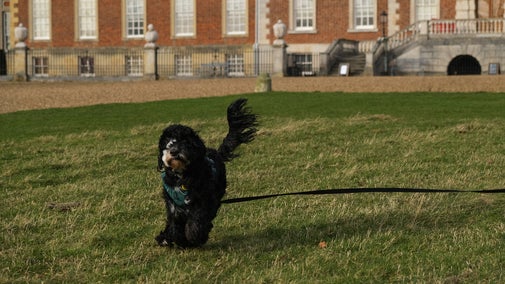
Discover everything you need to know about group visits at Wimpole, including information about booking.

Impressive 17th-century mansion at the heart of the estate, with intimate family rooms that contrast with lavish Georgian interiors.
Vibrant walled kitchen garden, parterre and winding pleasure grounds, planted with specimen trees and spring bulbs.
Acres of ancient landscape parkland with abundant wildlife, flora and fauna, a Gothic folly, multi-user trail and miles of walks.
The only in-hand farm of its kind in the National Trust. Home Farm is a model for sustainable farming practices and home to many rare-breed animals including Shire horses, pigs, sheep, cows and goats.
Shop filled with gifts, homewares, books, local produce and gardening accessories. Seasonal selection of plants for sale in the courtyard.
Café with terrace overlooking the gardens, serving light lunches, homemade cakes and specials, using produce from the kitchen garden.
Bookshop stocked full of pre-loved books.
Be dazzled by the new Illuminations trail, and enjoy choirs singing, decorations galore, and lots of festive food and drink.
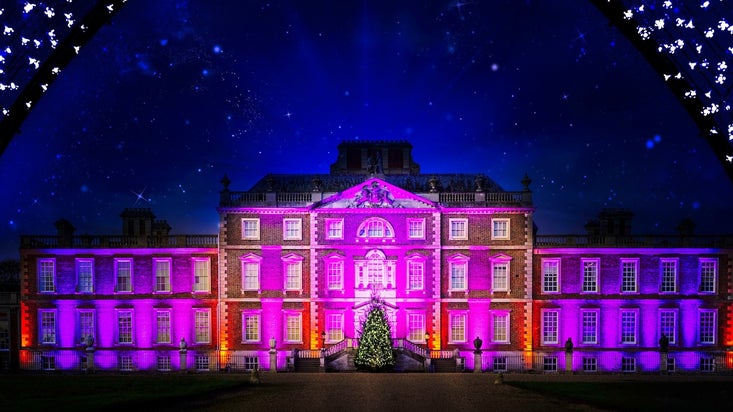
Amid the bustle of Christmas and New Year, take an hour for yourself, put on your slippers and sit in peace to read. Enjoy a peaceful hour's reading, surrounded by the historic setting of the library and shelves of books collected over the course of 300 years by Wimpole’s owners. One of the most remarkable rooms in the house, the library was designed in 1713, by the architect James Gibbs, for the owners Edward, Lord Harley, the 2nd Earl of Oxford and Earl Mortimer and his wife, Lady Henrietta Cavendish-Holles.
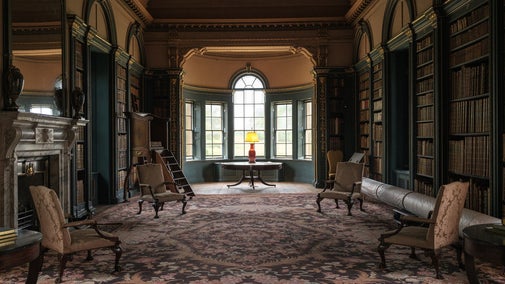
Visit Wimpole this winter for Little Acorns in the House, a pre-school group for 2-5 year olds. Come and join in with music and singing in the beautiful setting of Wimpole Hall.
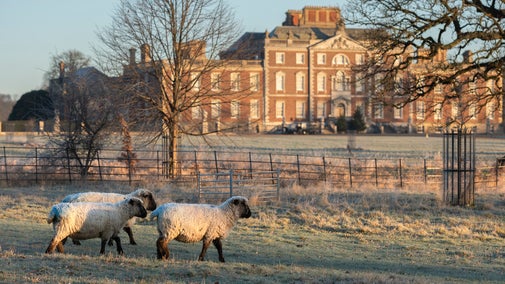
From events and activities to getting close to animals, here's what you need to know about a family day out at Wimpole.

Step inside Wimpole Hall and discover how previous owners made their mark on this complex house.
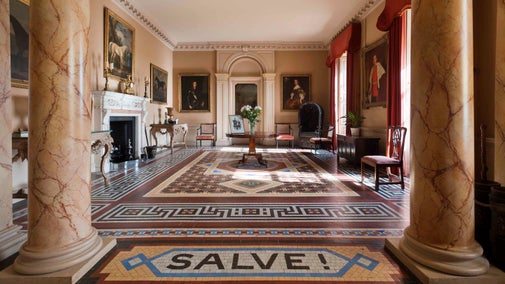
Discover Wimpole’s gardens and visit the Parterre, walk through the Pleasure Grounds meandering your way to the Walled Garden, with herbaceous borders and fruit trees.

Explore the acres of parkland at Wimpole, abundant with wildlife, flora and fauna; stroll across the open space, or head across the Chinese bridge to visit the Gothic folly.

Built in 1794, Home Farm is the only in-hand farm of its kind in the National Trust. Unique to Wimpole Estate, it is a model for sustainable farming practices. A must see on your next visit, it is home to many rare-breed animals and the species of flora and fauna that make the estate an agricultural champion.
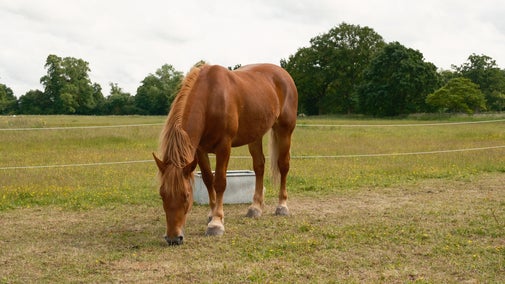
Stop for a bite to eat at one of the cafés or in the Old Rectory Restaurant at Wimpole.

Visit the shop at Wimpole to find produce from the farm, locally sourced treats, toys and plants or bag yourself a bargain in the second-hand bookshop.

Enjoy an invigorating cycle challenge through the rolling Cambridgeshire countryside around Wimpole Estate, passing through leafy bridleways and arable fields.
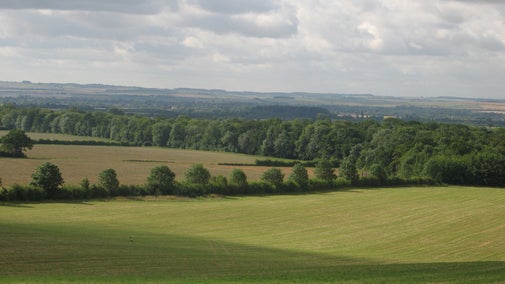
This cycle route is especially designed for cyclists looking for a bit more of a challenge, and looking to explore a little further afield from the Wimpole Estate.
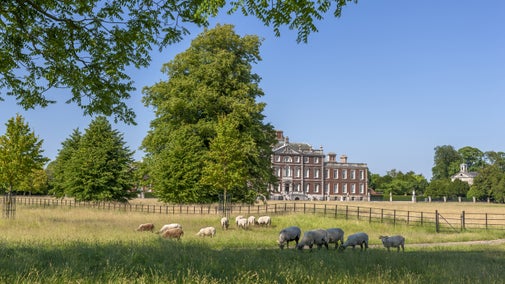
An easy, family friendly 1-mile walk around the Wimpole Estate, uncovering the past at this scheduled Ancient Monument.

Enjoy the estate from a different perspective and discover the best bits of the parkland and countryside by joining our volunteer guides on a hearty Wednesday Walk.
Wimpole's popular pre-school group heads to the mansion house for winter.
From Iron-age roundhouses to a sophisticated, modern estate, this site has been lived on and farmed for over 2,000 years.
Over the centuries, Wimpole has been owned by several families, and each has left its mark. The Civil War, a true love match and a collection of priceless manuscripts that formed the core of the British Library are just some of its stories.
One of Wimpole’s owners was Attorney-General Philip Yorke. His opinion that an enslaved person did not become free on reaching English soil governed legal thought on slavery for nearly half a century.
The present house, at the heart of this estate, was the vision of Elsie Bambridge. Wimpole had been an empty shell until she filled it with pictures and furniture, bringing it back to a welcoming home in the 1930s.
Intimate rooms contrast with beautiful and unexpected Georgian interiors, including Soane's remarkable Yellow Drawing Room and wonderful plunge bath. The fascinating basement corridor offers a glimpse into life below stairs.
Stroll around Pleasure Grounds and the Walled Garden, abundant with fruit, vegetables and beautiful herbaceous borders.
Home Farm contrasts the traditional farmyard with the noisy modern piggery and cattle sheds, with daily farm activities there is a chance to join in and discover more about farming.
Stride out across the landscape park, among the rare-breed cattle, through grand avenues, before entering shaded woodland and emerging into an arable landscape.
From Iron Age roundhouses to a modern estate, Wimpole has been lived on and farmed for over 2,000 years. Discover how its owners have each left their mark.

The National Trust’s Wimpole Estate in Cambridgeshire is unveiling a long-awaited transformation of its historic Library. Closed to protect its rare 18th-century carpet, the room is now open to the public thanks to a remarkable conservation effort. A high-resolution reproduction of the original carpet allows visitors to step inside and experience the grandeur of the space as it was meant to be—immersive, inspiring, and unforgettable. This innovative project balances preservation with accessibility, marking a new chapter for one of Wimpole’s most iconic interiors.

Wimpole Estate’s Home Farm welcomes a new Suffolk Punch mare, Walton Pride Joan, marking the return of this rare and historic breed to the estate. Joan will support farm work and breeding efforts as part of Wimpole’s rare breed conservation program.

Wimpole Estate has reduced its net carbon emissions by 69% in four years, enough to heat and power 204 homes. The largest solar panel installation in the National Trust saves 50 tonnes of CO2e per year and generates 67% of the estate’s electricity. Land management is capturing around 1,250 tonnes of CO2e per year, supported by the largest tree planting project in the National Trust to date.

Take a look at some of the important work that takes place at Wimpole Estate on a day-to-day basis, to look after this special place for everyone, for ever.
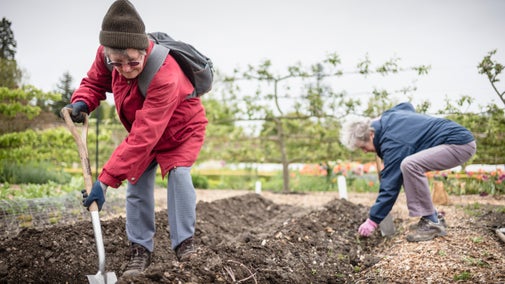
The National Trust has enhanced accessibility at Wimpole Hall in Cambridgeshire by installing a Stair Climber, enabling wheelchair users and those with limited mobility to access the historic building. Following a successful trial in 2024, 788 visitors who might have otherwise missed out were able to experience the site. The Stair Climber offers a non-invasive solution that preserves the hall’s historic fabric while making it more inclusive. Similar installations have been introduced at other National Trust properties across the country, reinforcing the organization’s commitment to improving accessibility for all visitors.
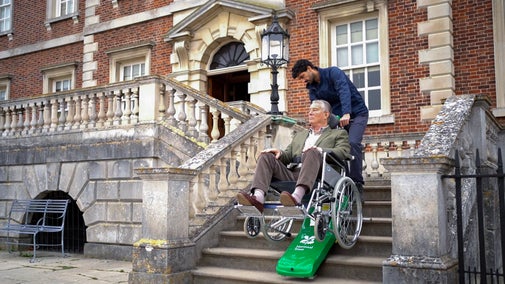
As part of the National Trust's Renewable Energy Investment Programme, Wimpole has reduced its dependence on fossil fuels in recent years. Here is what Wimpole has been doing to combat climate change on the estate.

Discover how Wimpole is using the Green Recovery Fund to help create and restore habitats, support solutions to tackle climate change and connect people with nature.
Discover the opportunities available for volunteering at Wimpole Estate and what you could get out of it.
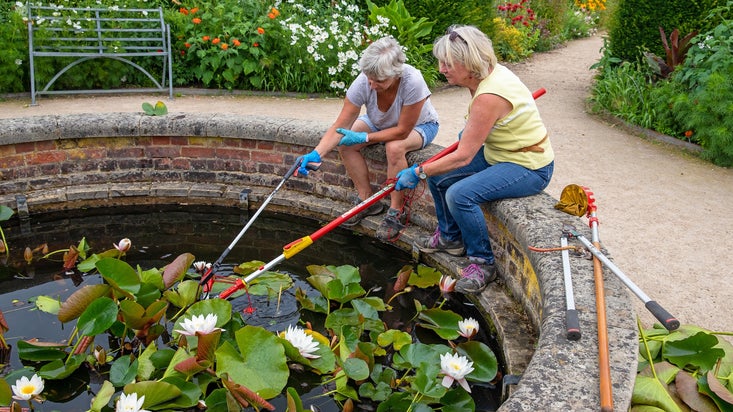
Explore the objects and works of art we care for at Wimpole Estate on the National Trust Collections website.


Join today and help protect nature, beauty and history – for everyone, for ever. Enjoy access to more than 500 places with National Trust membership.
By sharing your email address you’re agreeing to receive marketing emails from the National Trust and confirm you’re 18 years old or over. Please see our for more information on how we look after your personal data.